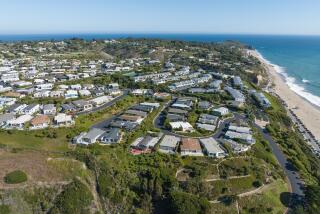The city of Malibu will employ Pepperdine...
- Share via
The city of Malibu will employ Pepperdine University students under a federally subsidized work-study program coordinated through the university.
The city will hire three to five students who are eligible to participate in the special program as part-time community service aides. They will perform a variety of tasks, including general clerical, telecommunications, light administrative, research and recreation work. Under the program, the university pays 25% of the student employees’ hourly wage, while the federal government covers the balance. The program, which will continue through June, 1995, is aimed at giving students community service experience while offering free services to municipalities and nonprofit organizations.
The work-study program promotes community service activity among students. It is part of new provisions that were amended in 1992 and last year of the Higher Education Act of 1965. Some of the participating nonprofit Malibu agencies are the Streisand Center of Conservancy Studies, Camp David Gonzalez, a juvenile work camp, Project Drug Free and Children’s Creative Workshop.
Information: (310) 456-4177.
*
The Culver City council voted Monday to permit the city of Beverly Hills to place two radio receivers and an antenna on the Continental Cablevision Tower in Baldwin Hills.
The remote radio equipment will allow Beverly Hills to complete its emergency radio system. The antenna and receivers are also expected to improve communications between Culver City and Beverly Hills during emergencies.
Because the radio equipment will only be used for public safety, Beverly Hills will just be charged for installation costs and the use of Continental’s facility.
*
Santa Monica’s controversial Sunset Park traffic plan stalled this week when the City Council failed to reach an agreement on how to best mitigate commuter traffic in the city’s southeast neighborhood.
The council voted to oppose a plan that would have placed 24-hour turn restrictions along Pico and Ocean boulevards, but it failed to come up with an alternative plan.
In a public hearing last week, more than 50 people addressed the council, appearing to be evenly split between endorsing the plan or sending it back to city staff for more study. The speakers were primarily from two rival neighborhood groups who for years have been unable to come to an agreement on the best traffic plan.
The council’s own lack of consensus Tuesday leaves the matter open for staff or the neighborhood associations to return with any of several proposed traffic plans after two newly elected Santa Monica council members are seated next month.
More to Read
Sign up for Essential California
The most important California stories and recommendations in your inbox every morning.
You may occasionally receive promotional content from the Los Angeles Times.










